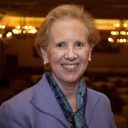Canada is getting global attention in 2017, not just for our charismatic and youthful Prime Minister, but for our apparent social harmony, in contrast to the social turbulence being experienced in other Western countries facing the pressures of economic disruption, climate change and cross-border migration.
But is all as it seems? And can it be sustained?
These are questions that are challenging philanthropy in Canada this year as we come to grips with a very quickly changing social landscape. What is philanthropy’s role in moderating the pressures and, perhaps, the conflicts engendered by urbanization and immigration?
We too must ask the hard questions: who is being heard, and who is in danger of being left behind? In the face of rising incidents of Islamophobia and unease about illegal immigration, the two Canadian national networks, Philanthropic Foundations Canada and Community Foundations of Canada, have organized 2017 conferences on the themes of ‘listening’ and ‘belonging’.
These gatherings take up the crucial challenges for philanthropy in the face of diversity: how to listen to different perspectives and how to creating a stronger sense of belonging together.
We are essentially an urban country today, even though we occupy an enormous geography. The increasing concentration of population in cities is also marked by an extraordinary and continuing increase in diversity.
Projections by Statistics Canada suggest that immigrants and second-generation individuals combined, who represented 38.2 per cent of Canada’s population in 2011, could account for nearly one in two people (between 44.2 per cent and 49.7 per cent) by 2036.
More than one-quarter of the Canadian population by 2036 would have a mother tongue other than English or French. If recent trends continue, more than half of immigrants in Canada in 20136 would be of Asian origin. Adding to the diversity of our society, the proportion of people in the Canadian population who are Aboriginal is a relatively high 4 per cent, and this population is growing.
Canada is not immune to the fears provoked by perceptions of difference or of inequality. We have had in our history many incidents of hate and expressions of prejudice, as we have begun to recognize in facing the history of colonialism and treatment of Aboriginal peoples.
And we are made aware daily of the tensions that come from discrimination based on race or ethnicity as we watch developments in our closest neighbor the United States.
Given the tensions that arise among people of different cultures and backgrounds, shouldn’t philanthropy in Canada be taking the long view and planning for what may come?
Canadian foundations have in fact been active in two key areas that will predict our long-term resilience as a society under pressure: education, and family development, particularly support for parents and children. Our public education system is a key mechanism for successful integration of immigrant children, and a predictor of success for rising income. Family investment in early child development is also clearly established as a social determinant of health and wellbeing.
But beyond areas where there is an established track record of progress, could foundations be more engaged in the hard work of creating ‘soft’ power – webs of social interaction and reserves of social capital that will support resilience at a community and national level?
The answer is certainly yes. We see signs that this is becoming a focus of philanthropic attention.
Participatory grantmaking, collective investment in community infrastructure, and engaging more diverse perspectives at the foundation board table are all likely to be areas of new development in Canadian funder practice in the coming year, as we try to do better on reconciliation, accommodation and consensus-building.
Hilary Pearson is President of Philanthropic Foundations Canada.
For more, see the PFC 2017 Symposium and the CFC 2017 Conference.



Comments (0)